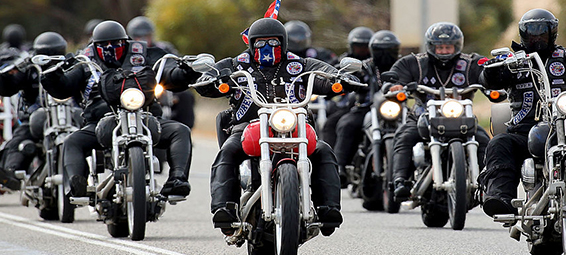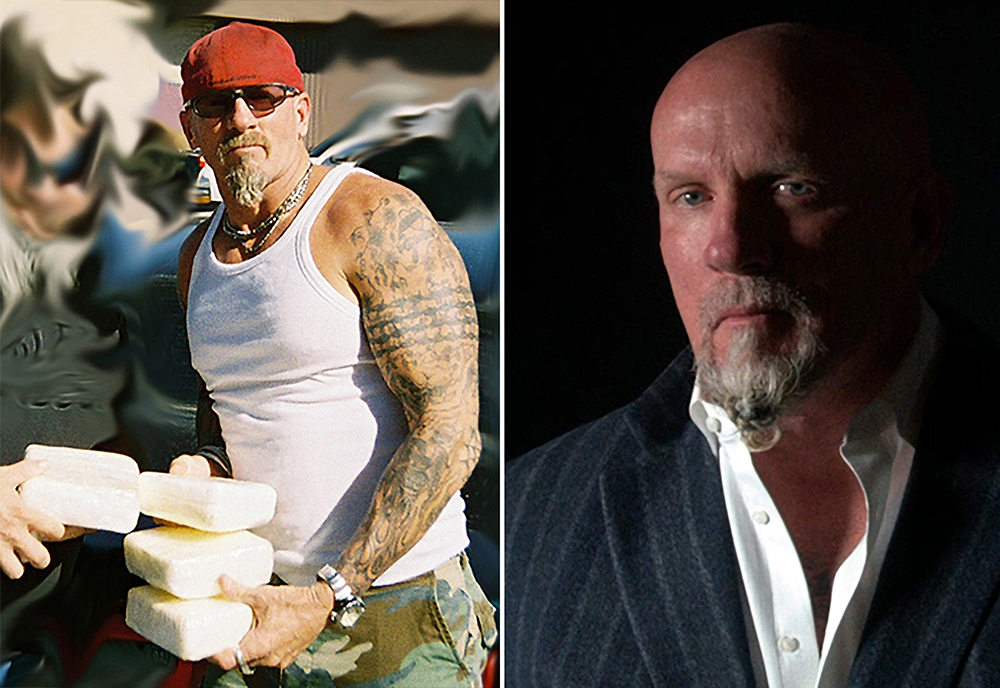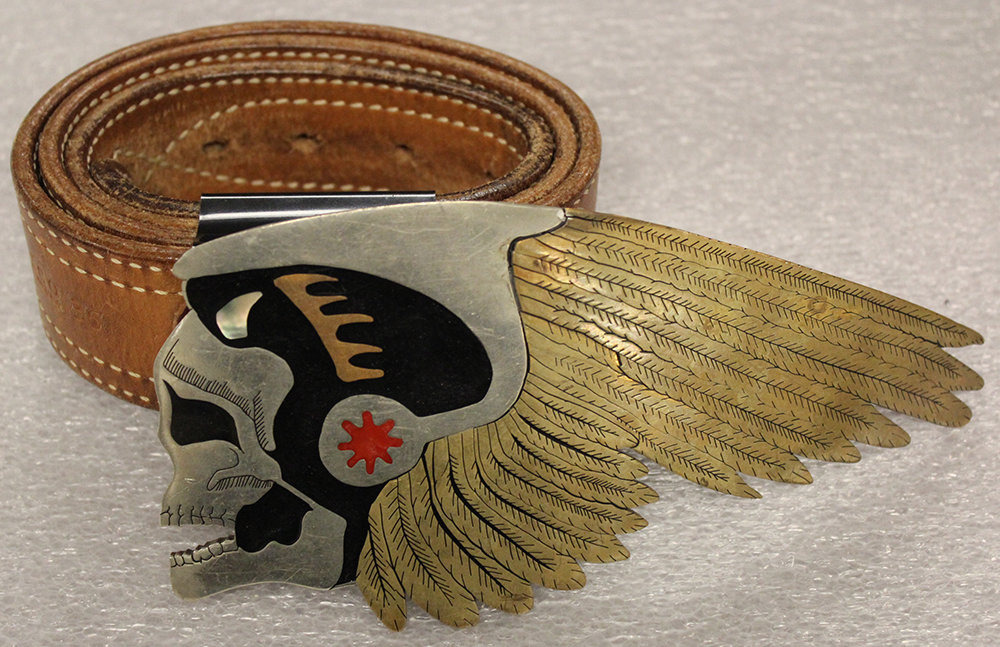The wild ones
Museum debuts new temporary display and video on outlaw motorcycle gangs

Photo courtesy of Getty Images.
Riding a motorcycle is not a crime. Neither is joining a club to share the thrill and freedom of rolling on two wheels along America’s streets and highways.
But a small percentage of motorcycle enthusiasts are members of outlaw motorcycle gangs. Authorities say they engage in drug trafficking, weapons trafficking, theft, extortion and other forms of organized crime, typically with a heavy dose of violence thrown in.
Outlaw biker gangs are a global phenomenon. They exist in 41 countries on six continents, making them one of the world’s most widespread forms of organized crime. Tom Barker, an Eastern Kentucky University emeritus professor of criminal justice who specializes in outlaw motorcycle gangs, identifies six organizations as having the most members and chapters around the globe: the Hells Angels, Bandidos, Pagans, Outlaws, Mongols and Sons of Silence.
On Friday, September 2, the Mob Museum unveiled a new temporary display and video about outlaw motorcycle gangs. The display features artifacts obtained from Jay Dobyns, a retired ATF agent who went undercover with the Hells Angels in Arizona in the early 2000s. The video includes interviews with Dobyns, author of No Angel: My Harrowing Undercover Journey to the Inner Circle of the Hells Angels, and Barker, author of Biker Gangs and Transnational Organized Crime.
Motorcycle clubs took off in the United States just after World War II. They gained national attention with Hollywood’s release of The Wild One, starring Marlon Brando, in 1954. Real biker gang members were hired to play themselves in the film, and one of them inspired the most famous line. A woman asks Brando’s character, “Hey, Johnny, what are you rebelling against?” Brando replies, “Whadda you got?”
Outlaw gangs grew and evolved in the 1960s after Ralph “Sonny” Barger became the leader of California’s most notorious outfit, the Hells Angels. Barger moved the gang into drug trafficking and other organized criminal activities.

The journalist Hunter S. Thompson provided one of the first up-close looks at outlaw motorcycle gangs with his 1966 book Hell’s Angels. Thompson documented the sex, drugs, violence and criminality that characterized the gang’s lifestyle. Thompson captured the public’s fascination with outlaw bikers when he wrote, “The streets of every city are thronged with men who would pay all the money they could get their hands on to be transformed – even for a day – into hairy, hard-fisted brutes who walk over cops, extort free drinks from terrified bartenders and thunder out of town on big motorcycles.”
More recently, outlaw motorcycle gangs were dramatized in the FX television network’s popular fictional series Sons of Anarchy, which aired six seasons between 2008 and 2014.
Biker gangs are often involved in brawls and shootings, but rarely do these conflicts reach the magnitude of what went down in 2015 in a restaurant parking lot in Waco, Texas. A territorial conflict between the Bandidos and Cossacks turned into the most deadly biker battle in American history – and it started with an argument over a parking space.
The melee resulted in nine deaths, 18 injuries and 177 arrests. Waco Police, who knew the biker meeting had the potential for violence, were in attendance when the shooting started. Officers did some of the shooting as well, and they may be responsible for four of the dead bikers. Many of those arrested were not directly involved in the conflict — they were simply in the wrong place at the wrong time.
As tragic as the Waco shootout was, it pales in comparison with biker wars in Canada and Scandinavian countries. A biker war in Canada between 1994 and 2002 resulted in more than 150 deaths, including innocent bystanders such as an 11-year-old boy. A biker war spanning Denmark, Finland, Norway and Sweden in the mid-1990s left 11 people dead and almost 100 injured.

Outlaw motorcycle gangs are growing internationally. The Hells Angels, for example, have chapters in South America, Europe, Africa, Australia and Asia. The Bandidos have members in 28 countries. Russia is home to several outlaw motorcycle gangs, including the notorious Night Wolves, who have received more than $1 million in government grants for their patriotic event.
In recent years, U.S. authorities have used undercover agents to infiltrate the gangs and prosecuted gang members using the RICO law. But other countries have been slow to adopt such racketeering laws that make it illegal simply to be a member of a continuing criminal enterprise.
Some motorcycle clubs are sensitive about their negative public image, arguing that most of their members are not involved in criminal activities. They note that their clubs are involved in a range of volunteer and charitable activities, especially supporting military veterans and children.
Experts believe outlaw motorcycle gangs will endure and grow internationally in the years to come, fueled not only by the profits of organized criminal activity but by the allure of being part of a brotherhood that believes society’s rules don’t apply to them.
Feedback or questions? Email blog@themobmuseum.org





